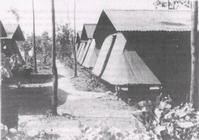


War History of the Australian Meteorological Service
Foreword
Preface
Introduction
Chapter 1: D.Met.S.—Australia's Wartime Weather Service
Chapter 2: The Weather Factor in Warfare
Chapter 3: Met in the Retreat
The Evacuations from Ambon and Namlea
Fall of Salamaua
The Singapore Expedition/ Brief Visit to Singapore
Trek across Timor/ The Retreat in Timor
Sea Escape from Tulagi
Vila and Noumea Bases
The Attacks on Darwin and Broome
Chapter 4: Met in the Advance
Chapter 5: Meteorology in Aviation
Chapter 6: Central Forecasting Services
Chapter 7: Met With the Army
Chapter 8: Research and Personnel Training
Chapter 9: Instrumental Development and Maintenance
Chapter 10: Scientific Developments in the RAAF Meteorological Service
Chapter 11: Divisional Bureaux and Their Work
Appendix 1: List of Reports Provided by D.Met.S. for Advances Operational Planning and Other Purposes
Appendix 2: List of Service Personnel RAAF Meteorological Service
Appendix 3: List of Civilian Personnel Who Worked Together with Service Personnel of the RAAF Meteorological Service
Appendix 4: List of Locations at which RAAF Meteorological Service Personnel Served
Index
Search
Help
Contact us

Vila and Noumea Bases
FO Mason and Sgt Martin had been stationed at Vila, administrative centre of the Condominium, since arriving by flying boat in early November 1941. The Vila meteorological section played its part in the battle of the Coral Sea by issuing forecasts for some of the aircraft that took part, but in May 1942 instructions were received for all RAAF personnel to leave Vila. The following day the Australian auxiliary cruiser Manoora took aboard all the men and proceeded to Sydney by way of Norfolk Island.Similarly, the RAAF weather section at Noumea, New Caledonia, did not function for long. FO (later Sqn Ldr) C. J. Wiesner and WO K. A. Smith established the section at the Air Force base on Ile Nou in October 1941, receiving cooperation from the French meteorologist and the Pan American base on the island. They met with many difficulties, among which were the hampering effect on communications provided by the poor telephone service, the language inconvenience and, at one stage, isolation caused by a nearby outbreak of bubonic plague.
In August 1942 meteorological services were taken over by the United States Navy and the Australians returned home.
The Attacks on Darwin and Broome
Closer to home, there was no retreat, but at least two Australian towns suffered at the hands of Japanese bombs and, with them, the meteorological organisations. Fortunately the weather men at Darwin and Broome escaped injury, though in both cases it was a close call.In the Darwin air-raid of 19 February 1942, some damage was done to the meteorological office by shrapnel and the effects of blast, but, from the operational point of view, the most serious effect was the interruption to teleprinter communication with Adelaide that occurred with the destruction of the Darwin post office. With RAAF signals already overloaded, it was impossible to obtain weather information through these channels, so the reporting network ceased to function, with obvious effect on forecasting. As a remedial measure, to some extent, it was decided to promote the function of the Daly Waters meteorological section from an observing to a forecasting post, in order to service aircraft flying to Adelaide and Brisbane.
On the day after the great raid, RAAF Operations moved to a new dispersal site. With them, of course, moved the met section, continuing to function in a large tent, hampered also by the necessity of sending, by means of an ancient car, 20 miles down the Batchelor Road to collect weather telegrams at the improvised post office. Later RAAF despatch riders improved this arrangement, if only by increased speed in deliveries.

Naturally, conditions were bad, apart from the frequent bombing. In one raid the meteorological tent was blown in half again without injury to personnel. In May, a new dispersed operations site on the western side of the RAAF aerodrome was occupied, and a subsequent move by the met section was to the Berrima Hospital site, where American weather men joined the team.
Fl Lt (later Sqn Ldr) J. N. McRae was in charge of the Darwin weather section through the bombing period, whilst Sqn Ldr G. W. Mackey arrived in April to take up the position of area meteorological officer.
In Broome, when the heavy Japanese raid burst on the township on 2 March, the staff of the meteorological station comprised Fl Lt Holmes, who had arrived from Ambon, via Darwin, on 20 February, Mr F. G. Rose, a civilian meteorologist and Fl Sgt G. Sneyd, who was later to figure in the nearly disastrous flight between Learmonth and Cocos Island.
People in Bright Sparcs - Holmes, Ralph Aubrey Edward; Mackey, George William; McRae, John Neil
 |
Bureau of Meteorology |  |
© Online Edition Australian Science and Technology Heritage Centre and Bureau of Meteorology 2001
Published by Australian Science and Technology Heritage Centre, using the Web Academic Resource Publisher
http://www.austehc.unimelb.edu.au/fam/0654.html